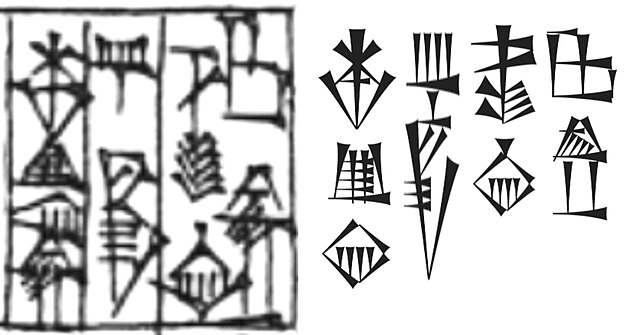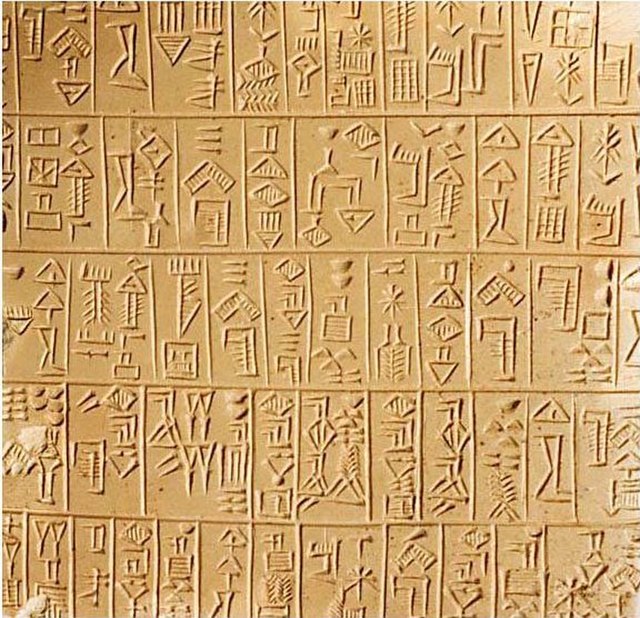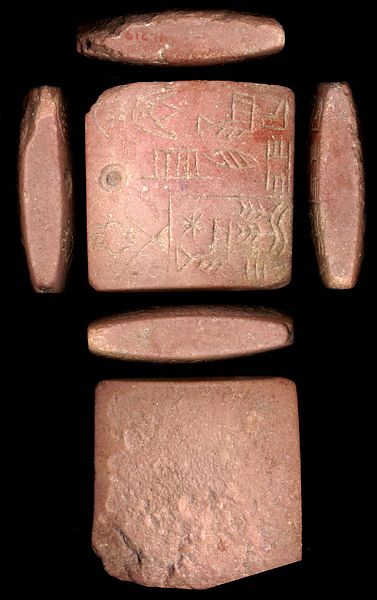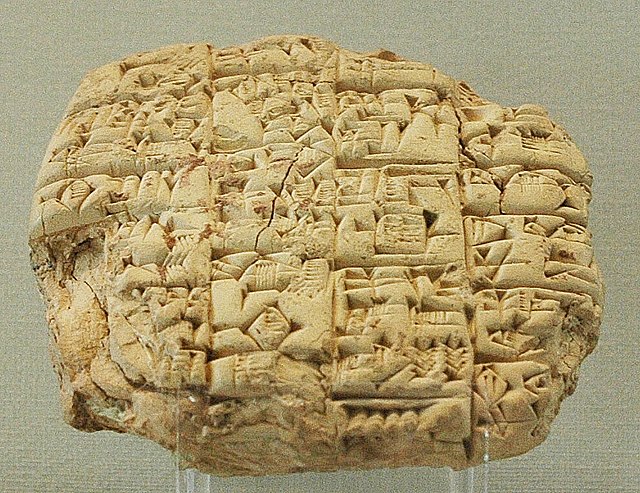Uru-ka-gina, Uru-inim-gina, or Iri-ka-gina was King of the city-states of Lagash and Girsu in Mesopotamia, and the last ruler of the 1st Dynasty of Lagash. He assumed the title of king, claiming to have been divinely appointed, upon the downfall of his corrupt predecessor, Lugalanda.
Fragment of an inscription of Urukagina; it reads as follows: "He [Uruinimgina] dug (…) the canal to the town-of-NINA. At its beginning, he built the Eninnu; at its ending, he built the Esiraran." Musée du Louvre
Title "Urakagina king of Girsu" (𒌷𒅗𒄀𒈾 𒈗 𒄈𒋢𒆠), Urukagina lugal Girsu-ki), in the "Lamentation for the destruction of Umma".
Cone of Urukagina, Louvre Museum AO 3278.
Cone fragment inscribed with part of the text of the reforms of Uruinimgina (Urukagina) - Oriental Institute Museum, University of Chicago
Sumerian is the language of ancient Sumer. It is one of the oldest attested languages, dating back to at least 2900 BC. It is accepted to be a local language isolate and to have been spoken in ancient Mesopotamia, in the area that is modern-day Iraq.
Sumerian language
This proto-literate tablet (c. 3100 – 2900 BC) records the transfer of a piece of land (Walters Art Museum, Baltimore)
The first known Sumerian-Akkadian bilingual tablet dates from the reign of Rimush. Louvre Museum AO 5477. The top half is in Sumerian, the bottom half is its translation in Akkadian.
Letter sent by the high-priest Lu'enna to the king of Lagash (maybe Urukagina), informing him of his son's death in combat, c. 2400 BC, found in Telloh (ancient Girsu)

![Fragment of an inscription of Urukagina; it reads as follows: "He [Uruinimgina] dug (…) the canal to the town-of-NINA. At its beginning, he built the](https://upload.wikimedia.org/wikipedia/commons/thumb/0/0c/Clay_cone_Urukagina_Louvre_AO4598ab.jpg/640px-Clay_cone_Urukagina_Louvre_AO4598ab.jpg)






